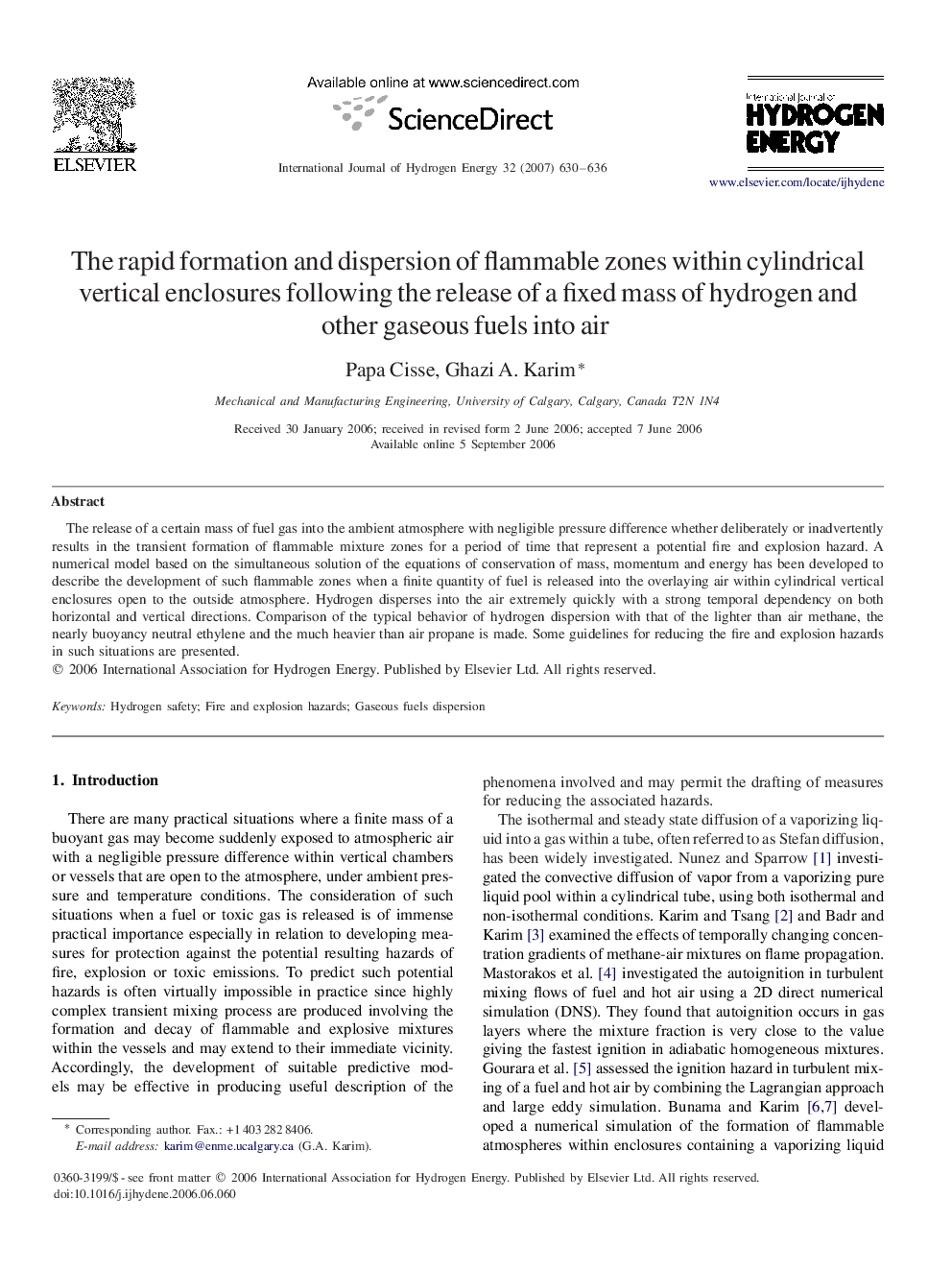| Article ID | Journal | Published Year | Pages | File Type |
|---|---|---|---|---|
| 1283899 | International Journal of Hydrogen Energy | 2007 | 7 Pages |
The release of a certain mass of fuel gas into the ambient atmosphere with negligible pressure difference whether deliberately or inadvertently results in the transient formation of flammable mixture zones for a period of time that represent a potential fire and explosion hazard. A numerical model based on the simultaneous solution of the equations of conservation of mass, momentum and energy has been developed to describe the development of such flammable zones when a finite quantity of fuel is released into the overlaying air within cylindrical vertical enclosures open to the outside atmosphere. Hydrogen disperses into the air extremely quickly with a strong temporal dependency on both horizontal and vertical directions. Comparison of the typical behavior of hydrogen dispersion with that of the lighter than air methane, the nearly buoyancy neutral ethylene and the much heavier than air propane is made. Some guidelines for reducing the fire and explosion hazards in such situations are presented.
